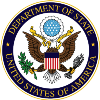How Diplomatic Security Deploys Life-Saving Armored Vehicles
By: Suzanne K. Whang, Public Affairs Officer in the Bureau of Diplomatic Security at the U.S. Department of State.
In South Sudan, two U.S. Embassy armored vehicles carrying mission personnel were headed toward the residential compound on July 7, 2016. Less than half a mile from their destination, they were stopped by dozens of armed soldiers who tried to open the vehicle doors. Sensing danger, the drivers maneuvered away from the checkpoint.
That’s when the soldiers opened fire — approximately 50 rounds in all. After what seemed like an eternity for the passengers, the two vehicles arrived at the residential compound, riddled with bullet holes. But none had penetrated the cabin, and nobody onboard was injured.
In another incident, two embassy armored vehicles in Pakistan were attacked by a suicide car bomber in September 2012. Two American officers, two Foreign Service national staff, and at least two Pakistani police officers were wounded. If not for the armored vehicles, fatalities would have been unavoidable.
As the State Department continues to operate in unstable regions, its fleet of non-tactical, armored vehicles has grown to more than 3,000. These vehicles are essential for transporting the Secretary of State, Chief of Mission personnel at post, and for VIP protective details at special events.
The vehicles vary in make, size, and weight. But they all go through an extensive transformation process in which they’re outfitted with hundreds of pounds of armor plating, bullet-resistant glass, and run-flat tires or inserts. Multiple vehicle systems are also hardened or modified, including the passenger compartment, fuel system, suspension, and other key vulnerable areas.
Depending on the requirements of a particular post, venue, or VIP, armored vehicles are outfitted with various life-safety equipment, including lights, sirens, cameras, and sophisticated communications systems. In the most volatile regions, armored vehicles are equipped with robust countermeasures that can neutralize improvised explosives.
In the event of an emergency, Diplomatic Security Service (DSS) special agents onboard some vehicles have the ability to communicate via a satellite network with other vehicles in the convoy, as well as the command center at post and back at the State Department’s Bureau of Diplomatic Security (DS) headquarters. All involved parties have real-time situational awareness of a dynamic situation, which is critical for quick and informed decision making.
DS fields one of the largest non-tactical armored vehicle fleets in the world and is known throughout the armored vehicle industry for its rigorous inspections and testing to meet stringent State Department requirements and Overseas Security Policy Board standards.
All State Department armored vehicles and their life-safety systems are researched, customized, tested, fielded and maintained by the Countermeasures Directorate within DS. It is not surprising that DS often provides expertise to other federal and international partners that deploy armored vehicles.
DS ensures the materials used in the armoring process are tested to make certain they perform as designed in the worst situations. This includes ballistic and blast tests; mobility testing in various conditions; and longevity testing. Only then is a vehicle deemed ready to be deployed throughout the world to safely transport State Department personnel and dignitaries.
This story originally appeared on DipNote, the U.S. Department of State’s Official blog.
